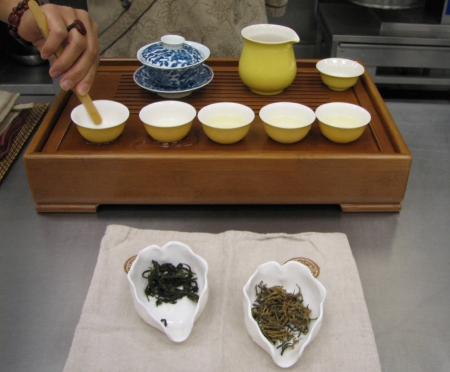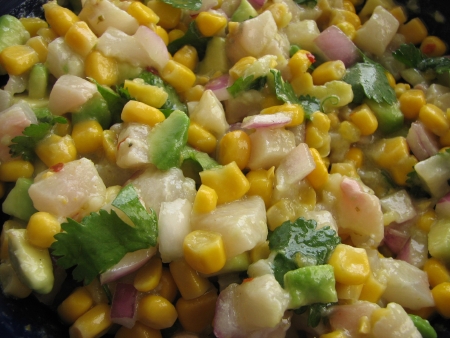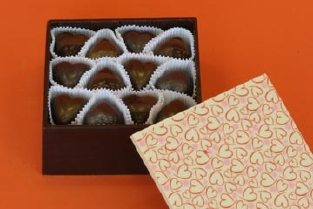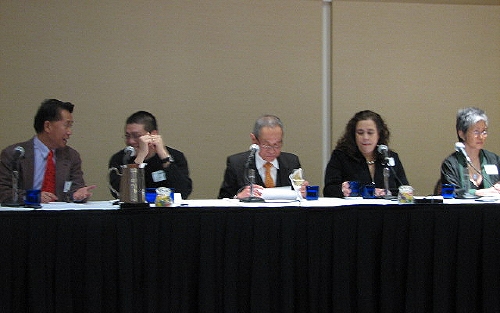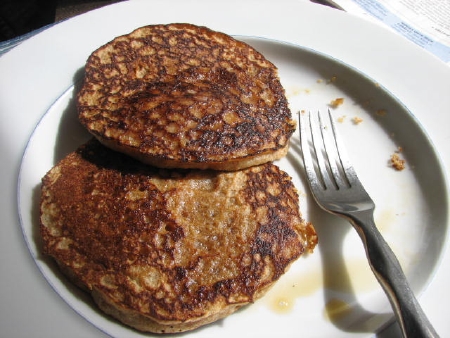
Want to know the most scrumptious thing you can make for breakfast this weekend? It's these pancakes. Seriously, they are so good I made them twice this week. I've been slowly but surely testing out more and more recipes from whole grain cookbooks, trying to learn how to cook with whole grains. I just want to perfect that handful of recipes I can turn to time and again.
Whole wheat flour can be a tough ingredient to work with because it has such a strong flavor and texture. Often I use white whole wheat flour from King Arthur or I mix half all purpose white flour with half whole wheat but in this recipe, use all whole wheat. The pancakes are both fluffy and moist at the same time. Of course, I put maple syrup on them too! If you have a vanilla syrup like the ones from Sonoma Syrup Company, you could use those instead.
The recipe originally comes from the Betty Crocker Whole Grains: Easy Everyday Recipes, but I've taken more than a few liberties with it. I've made a smaller batch since the original recipe served 7(!) and I've added more leavening and bumped up the vanilla flavor. I hope you like it.
Whole Wheat Vanilla Pancakes
serves 2
Ingredients
1/2 cup whole wheat flour
1 Tablespoon sugar
1/2 teaspoon baking powder
1/4 teaspoon baking soda
1/4 teaspoon salt
1 egg
1/4 cup vanilla yogurt
1/4 cup water
1 Tablespoon oil (canola, grapeseed or rice bran oil)
1/4 teaspoon vanilla extract
Instructions
Whisk together the whole wheat flour, sugar, baking powder and soda and salt in one bowl and make sure there are no lumps. In another bowl whisk together the egg, yogurt, water, oil and vanilla. Combine the wet and dry ingredients and stir until moistened. Use a very scant 1/4 cup per pancake cooking on a griddle over medium high heat. Cook for 1-2 minutes or until bubbles form and flip, cooking until golden brown.
Enjoy!












